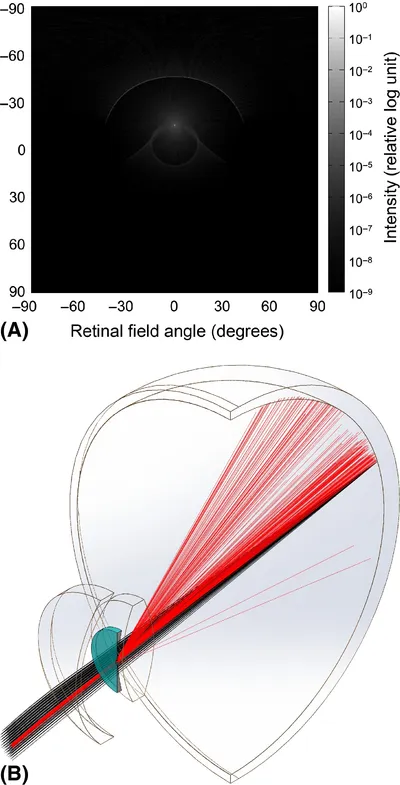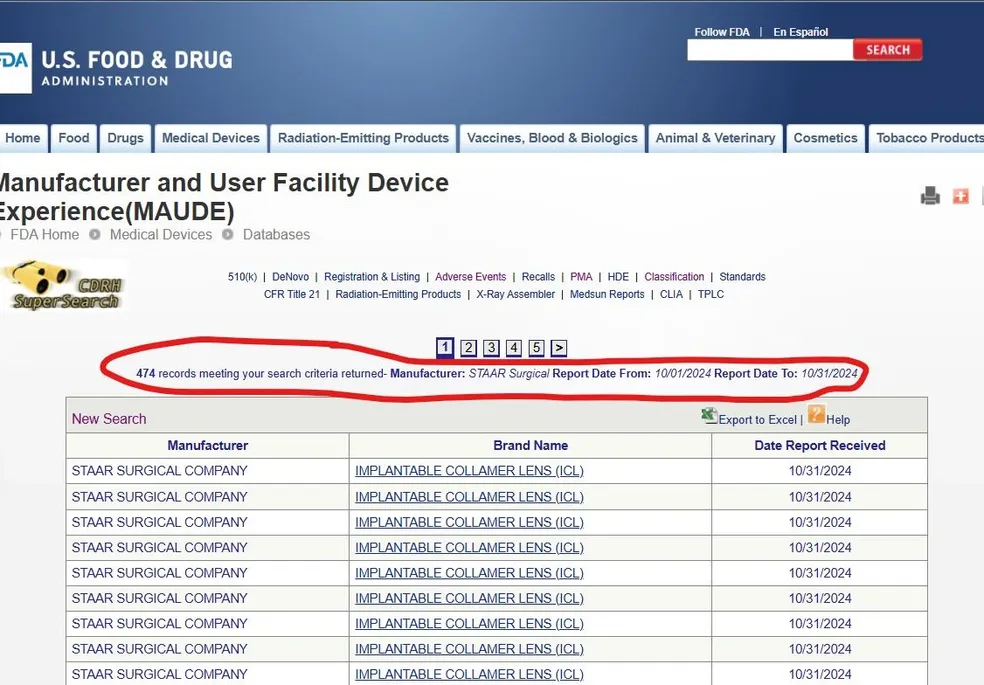What About ICLs?
ICLs are manufactured and sold by STAAR Surgical. ICLs are a form of posterior chamber phakic intraocular lens. The posterior chamber refers to the space inside the eye between the iris and the natural lens. Phakic simply means that the natural lens remains in the eye, which is different from cataract surgery or refractive lens exchange (RLE)/clear lens extraction (CLE) in which the natural lens is removed and replaced with an artificial lens.
While EVO Visian ICLs are marketed as a safer alternative to LASIK, medical literature, injury reports, and patient testimonials say otherwise. Virtually all advertising of EVO ICLs completely trivializes this dangerous, unnecessary surgery and fails to disclose legally-required warnings about the risks and limitations.
EVO ICLs carry serious risks to healthy eyes. In contrast, eyeglasses and contact lenses are safe, relatively inexpensive, and widely available. With eyeglasses or contact lenses, it’s easy to get a new prescription when your vision changes, but with ICLs you would have to undergo ICL exchange surgery or return to wearing glasses or contacts, and since ICL surgery for myopia does not eliminate the need for reading glasses after the age of 40, virtually all ICL patients will end up back in glasses.
Halos and Rings
While glasses and contacts have a large enough optical zone to focus all of the light entering your eyes in the dark when your pupils naturally dilate, even the newest EVO ICL has a much smaller optical zone. As a result, some of the light entering your eyes will not be focused. This causes aberrations such as halos which are present even in situations as simple as looking at a white user interface in a video game set against a dark background.
The newer version of ICLs, EVO ICL, has a central hole, which was intended to make the lens safer, but it introduced a new visual disturbance known as ring-shaped dysphotopsia, which appears as a large ring. Patients have told us that they see rings outside on sunny days.
What are the risks of ICLs?
Because ICLs are implanted inside the eye in the tight space behind the cornea and iris, and in front of the natural lens where it doesn’t belong, it can cause devastating complications. We believe that no one would elect to have EVO ICLs implanted in their eyes if they fully understood the risks. Potential complications of EVO ICLs include, but are not limited to, the following:
- Dry eyes
- Infection
- Inflammation
- Halos (due to the small optic diameter of the ICL)
- Glare (also known as ring-shaped dysphotopsia) due to the central hole of the EVO ICL
- Retinal detachment
- Posterior vitreous detachment (PVD)
- Floaters
- Glaucoma (vision loss)
- High intraocular pressure requiring long-term medication
- Cataracts
- Loss of corneal endothelial cells, which keep the cornea clear
- Traumatic incision opening
- Incorrect ICL size or power
Also read the FDA’s webpage WHAT ARE THE RISKS?
Complications of ICLs may present immediately or they may develop slowly and insidiously over several years. In fact, late-onset complications were largely missed in the clinical trials with only three years of follow-up.
In the sales pitch, eye surgeons claim that ICLs are reversible because they’re hoping to take the fear out of having inherently dangerous intraocular surgery. Indeed, ICLs can be removed, but not without risk of infection, inflammation, damage to the corneal endothelium, iris and natural lens, and more.
ICL surgery is also marketed as “upgrading” your vision. As studies find even years after surgery, most patients continue to suffer from new vision problems like halos.
Note that glasses and contacts cannot fix the higher order aberrations which result in this category of vision problems.
Do eye doctors have ICLs implanted into their own eyes?
We have only heard of a couple of eye doctors who have had ICL surgery. That fact alone should cause you to beware of ICLs. If an eye doctor’s eyes are too important to risk with ICL surgery, aren’t yours?
FDA Injury Reports
Hundreds of incident and injury reports due to ICL surgery are submitted to the FDA’s MAUDE database each month.
If you have experienced complications from ICL surgery, please:
- Report to the FDA via MedWatch.
- Review existing reports in the FDA MAUDE database. Enter “STAAR Surgical” in the “Manufacturer” field, skip the other fields, enter a date range, and click “Search”.
- Share your experience with Vision Advocacy to help warn others.
Our Recommendation
We strongly recommend against ICL surgery.
Safer alternatives include:
- Eyeglasses - No surgery, no risk, easily updated as prescription changes
- Contact lenses - Removable, reversible, continually improving technology
- Accepting your natural vision - Many people with mild refractive errors function perfectly well without correction
Vision is precious. Don’t risk it on an elective, invasive procedure that may cause permanent complications for a cosmetic benefit.

